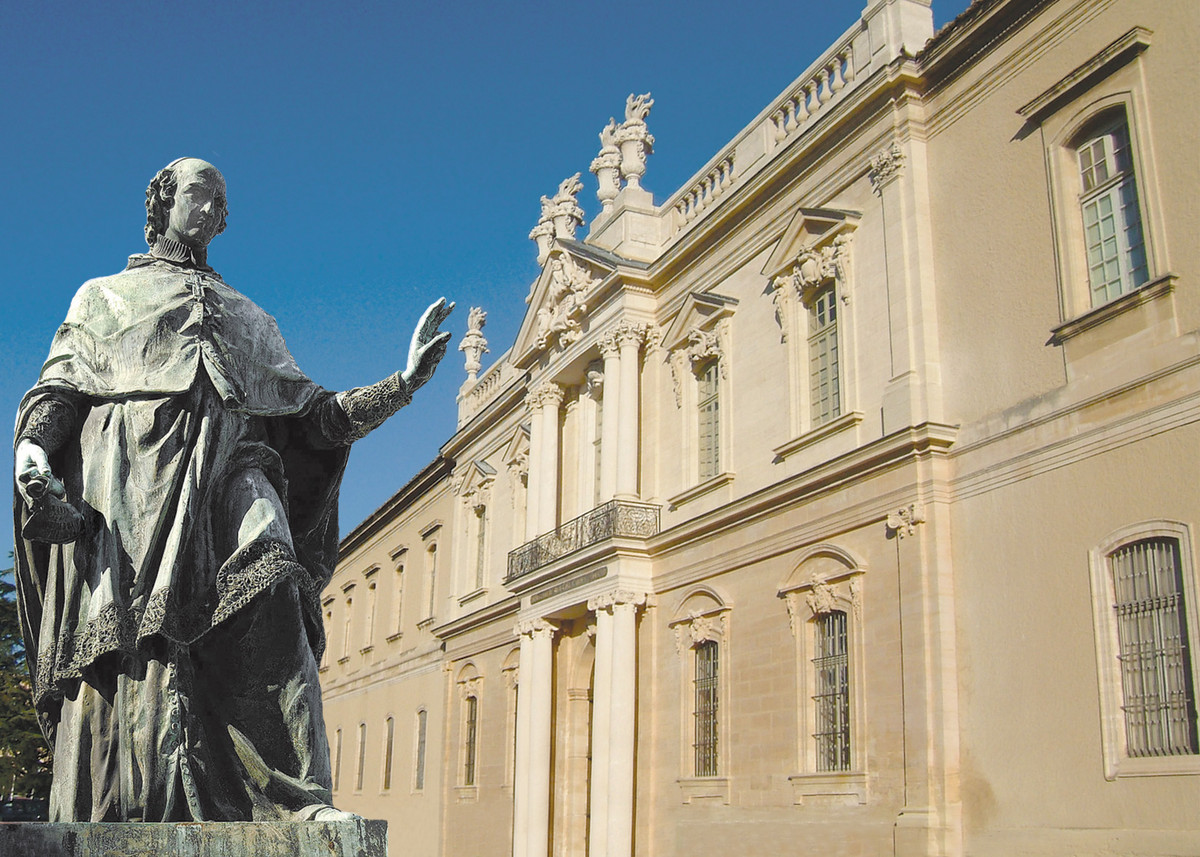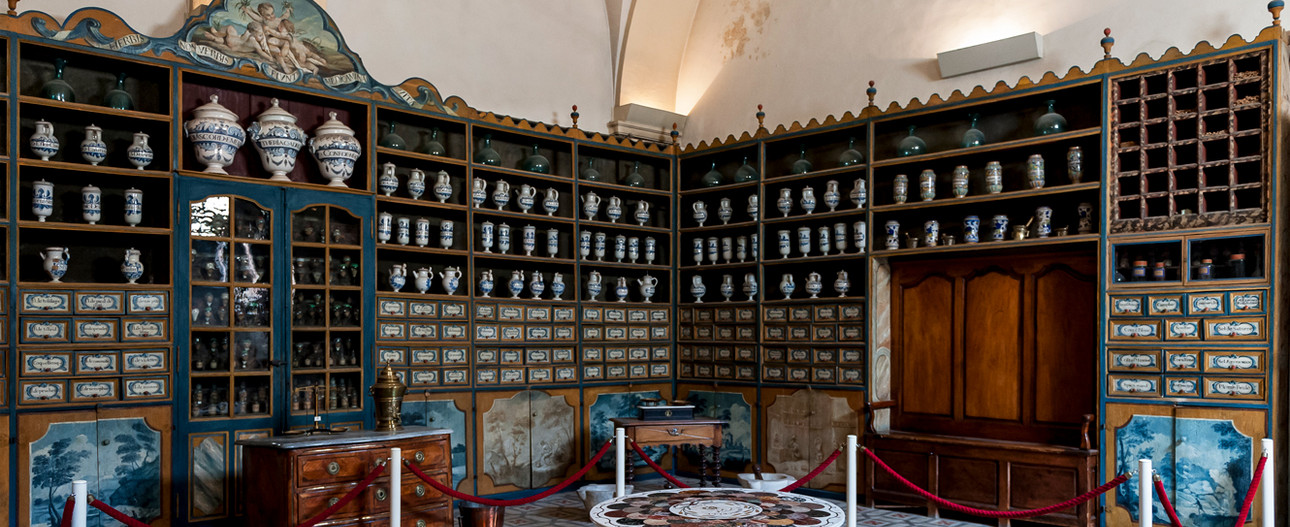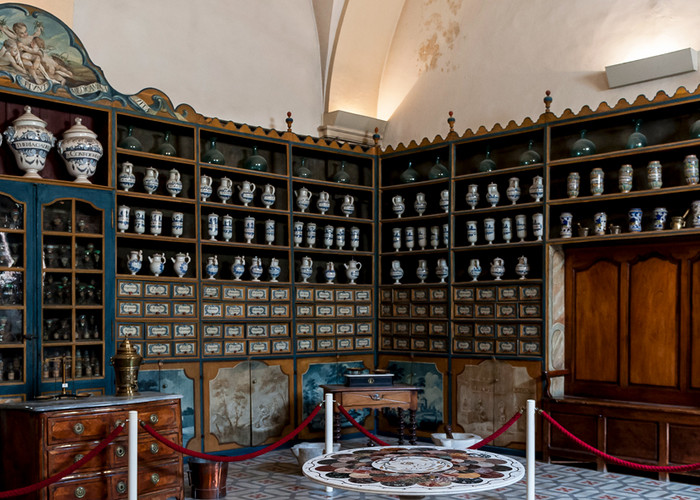The Pharmacy
The Hôtel-Dieu pharmacy is one of the most remarkable in Southeast France.
More than 300 medicines were stored in drawers (‘droguier’, crude drugs), glass jars (‘poudrier’, bulk powder) and then-common earthenware pots imported from far and wide, such as nearby Moustiers and Narbonne or further-afield workshops in Spain and Italy.
These containers were lain out on richly painted wooden shelves by Sir Guillaume Duplessis (father of the famous portrait artist in the court of Louis XVI) in 1761, with the assistance of his apprentice Laurent Peyrotte (son of Alexis Peyrotte, an ornamentalist from the Comtat Venaissin who worked on several royal residences).
The lower door panels are decorated with landscapes and depictions of monkeys, with satyric scenes showing the work of apothecaries.
The upper parts of the wooden panelling show allegories of the four seasons in the style of François Boucher. The allegory of spring above the poudrier bears the Latin inscription: Herbis non verbis fiunt medicamina vitae (‘it is in plants, not words, that remedies for life are found’).
Next to the apothecary, the sister pharmacists working at the Hôtel-Dieu were given all the rooms they needed to produce and store medicines, organised along a corridor, from a laboratory with an enormous fireplace and water source and several storage areas for raw materials and tools, to a cabinet for administration work and their own small library.






